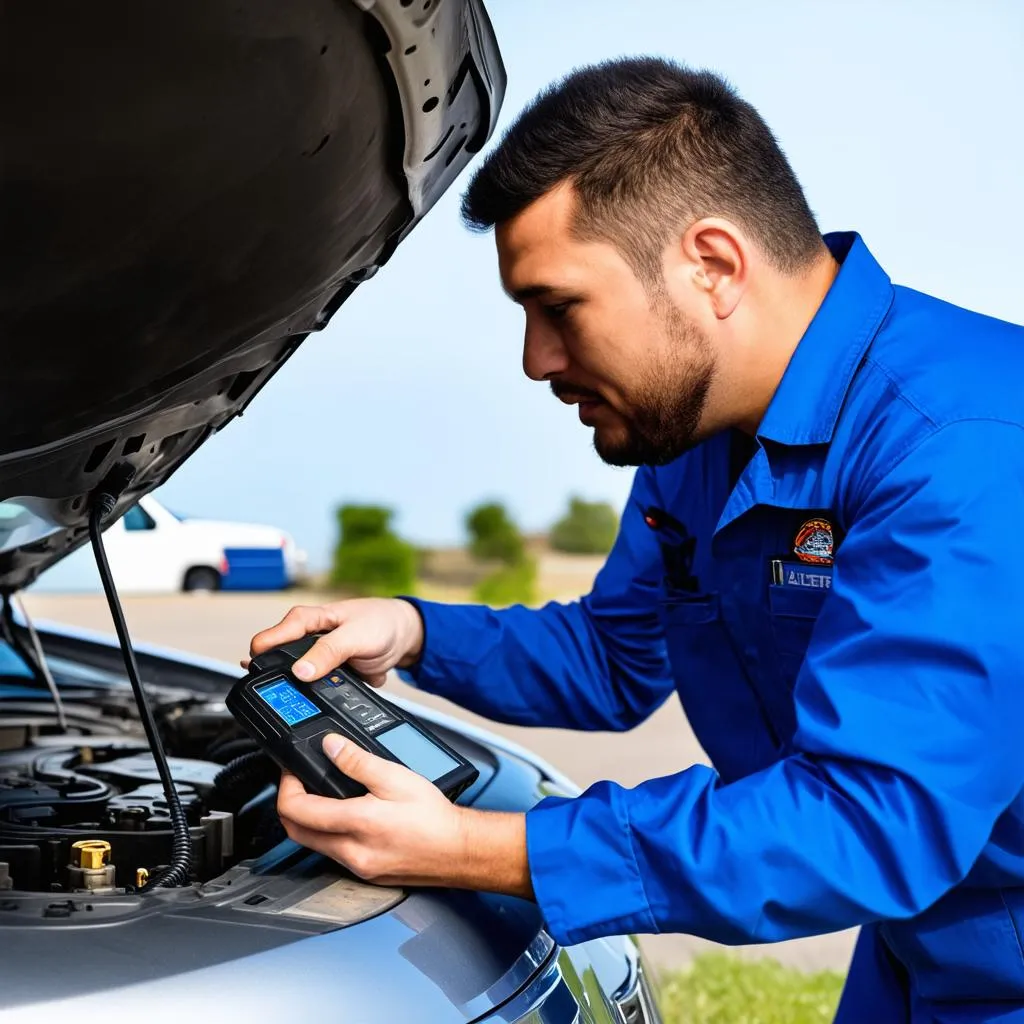Picture this: you’re a young mechanic in a bustling Chicago garage, grease under your fingernails and a trusty wrench in hand. A sleek 1995 Mercedes-Benz E-Class rolls in, its check engine light glaring like a beacon. You grab your trusty OBD scanner, eager to delve into the car’s electronic brain, but there’s a hitch – a 14-pin connector stares back at you. Now, you’ve heard whispers about these older connectors, rumors of a time before the standardized 16-pin OBD2. Could this be the elusive OBD1?
Decoding the 14-Pin Puzzle: What Does It Really Mean?
Before we jump to conclusions, let’s break down what this “14-pin is OBD1” phrase actually means. From a seasoned mechanic’s perspective, it’s essential to understand that the number of pins on a diagnostic connector doesn’t solely define whether a car uses OBD1 or OBD2.
-
OBD1: This early generation of onboard diagnostics, prevalent in vehicles from the late 80s and early 90s, was far from standardized. Each manufacturer, from Ford to Toyota, had its own proprietary system and connectors. Some, like certain BMW and Volkswagen models, did indeed use a 14-pin connector.
-
OBD2: Introduced in 1996, OBD2 brought a universal standard to vehicle diagnostics, including the familiar 16-pin connector. This meant mechanics could finally use one scanner on a wider range of cars, making diagnostics significantly easier.
So, while a 14-pin connector might indicate OBD1, it’s not a guaranteed sign. It’s like assuming everyone driving a red car is a speed demon – possible, but not always accurate!
Navigating the Diagnostic Maze: Finding the Right Path
Now, let’s address the elephant in the room: if a 14-pin connector doesn’t always equal OBD1, how can you tell what system your car uses?
-
Consult the Owner’s Manual: Your car’s manual is your best friend here. It usually specifies the diagnostic system and connector type.
-
Check Under the Hood: Look for a sticker under the hood. In the US, cars manufactured after 1996 are legally required to have an emissions sticker mentioning “OBD2 compliant.”
-
Do Your Research: Online forums dedicated to specific car models are treasure troves of information. You’ll often find fellow enthusiasts sharing their experiences and tips on diagnosing older vehicles.
Remember, just because your car has a 14-pin connector doesn’t mean you’re out of luck. Several adapters and specialized scanners can bridge the gap between older and newer systems, allowing you to access those crucial diagnostic codes.
 Mechanic Connecting Scanner to Car
Mechanic Connecting Scanner to Car
Beyond the Pins: Addressing Common Questions
Here are some other queries we often hear from car owners grappling with older diagnostic systems:
Q: Can I use a regular OBD2 scanner on a 14-pin connector?
A: Generally, no. However, adapters are available that convert the 14-pin connection to a 16-pin OBD2, allowing you to use a standard scanner.
Q: My car has a 14-pin connector, but it was made after 1996. Why?
A: While OBD2 became mandatory in the US in 1996, some manufacturers, particularly those producing European cars, continued using 14-pin connectors for a few more years.
Q: Where can I find a reliable mechanic who can diagnose my car with a 14-pin connector?
A: Look for experienced mechanics specializing in your car’s make and model. They’ll likely have the tools and knowledge to diagnose older systems effectively. For example, a mechanic specializing in BMW repair on Ocean Drive, Miami Beach would be a good bet for a classic BMW with a 14-pin connector.
Need Help Navigating the World of Car Diagnostics? We’re Here for You!
Don’t let the complexities of older diagnostic systems leave you stranded. Whether you’re struggling to decipher cryptic error codes or need guidance on finding the right tools, our team of automotive experts is just a message away. Contact us on Whatsapp at +84767531508 for 24/7 support. From Kia Soul OBD issues to understanding Chevrolet Aveo compression tests, we can help you unlock the secrets of your car’s electronic brain. You can also check out our other articles on OBD readers and Chrysler-specific codes for more valuable insights.
Remember, knowledge is power when it comes to car maintenance. By understanding the nuances of your vehicle’s diagnostic system, you can ensure it stays in tip-top shape for years to come.